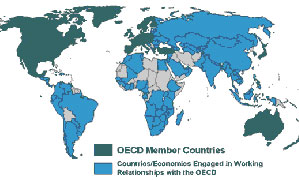Hazelkorn: rankings hebben merkbaar impact

Higher education institutions worldwide are much more concernedabout league tables and ranking systems than expected, an
The remarkable study gives an insight into the impact of leaguetables and rankings on universities around the world, and shows howtheir influence is far wider than intended.
Comparative information
They were originally conceived as providing comparativeinformation to key audiences such as students, public opinion andparents. But the survey of leaders and senior managers in more than200 higher education institutions in 41 countries reveals that thetables and rankings are influencing key policy-making areas such asthe classification of institutions and the allocation offunds.
“There is enormous attention given to every league table that ispublished as well as its quality ranking. And they are takenseriously by students, government and especially by the media,”says the main author of the study, Professor Ellen Hazelkorn fromthe Dublin Institute of Technology. “Because of this, they have ahuge influence on university reputations and thus they promotecompetition and influence policy-making.”
Shifting focus worldwide
National league tables have been common since the 1990s but, ashigher education has become globalised, the focus has shifted toworldwide university rankings such as those published by the TimesHigher Education Supplement, UK, and the Shanghai Jiao TongUniversity in China.
Among the main findings in the OECD study are:
* 58% of respondents were not happy with their currentranking.
* 70% want to be in the top 10 % nationally.
* 71% want to be in the top 25% internationally.
* 57% believe league tables and rankings are influencing thewillingness of other institutions to form partnerships withthem.
* 56% have a formal internal mechanism for reviewing their rankorder.
Of the latter respondents all but three have taken strategic oracademic decisions or action as a result of reviewing theirrank.
Monitoring perfomance and hiring Nobels
Hazelkorn found strikingly similar types of actions acrossinstitutions. She says university leaders are incorporating theoutcomes into their strategic planning mechanisms, reorganisingtheir institutions to achieve higher rankings and, in general,using the results to identify weaknesses.
They are seeking to either resolve institutional problems oreradicate the source, such as hiring more Nobel Prize winners (acriterion in the Shanghai Jiaotong ranking).
In several instances, respondents indicated that either a specialinvestigation team had been appointed or assigned to overseeorganisational change, ensure regular “observations of rankings andmethods”, and monitor the performance of peer institutions.
Hazelkorn concludes that those affected by league tables andrankings tend to draw broad brushstroke conclusions. She says theyuse the results to “reassure” themselves about their collaboration,investment, future employer or university choice while at the sametime providing the institution with a rating that can bepublicised. Universities whose ranking is not prestigious oftenbelieve their poor rating creates a cycle of disadvantage forthem.
[bron: University World News]
Meest Gelezen
Vrouwen houden universiteit draaiende, maar krijgen daarvoor geen waardering
Wederom intimidatie van journalisten door universiteit, nu in Delft
Hbo-docent wil wel rolmodel zijn, maar niet eigen moreel kompas opdringen
‘Burgerschapsonderwijs moet ook verplicht worden in hbo en wo’
Raad van State: laat taaltoets nog niet gelden voor hbo-opleidingen



